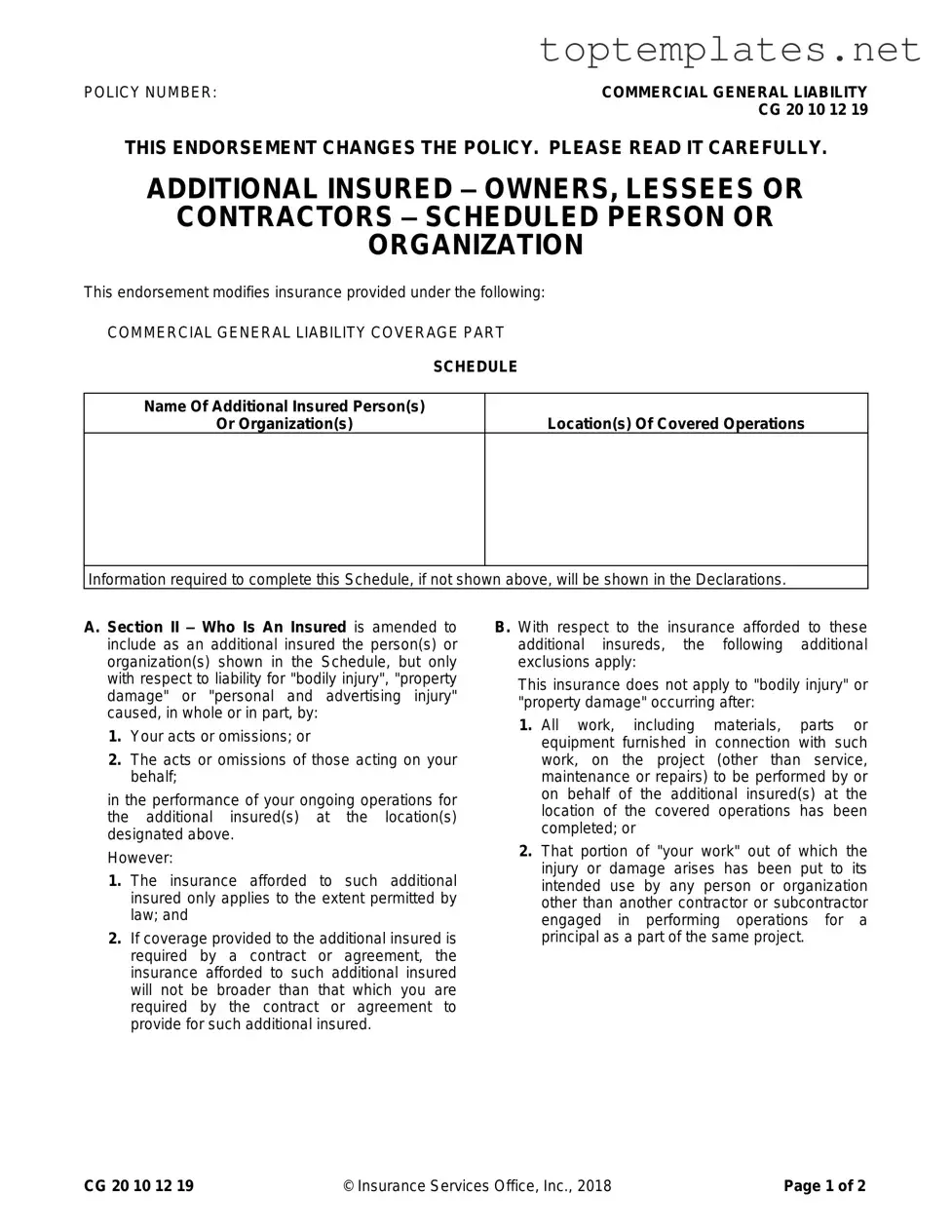What is the CG 20 10 07 04 Liability Endorsement form?
The CG 20 10 07 04 form is an endorsement that can be added to a commercial general liability (CGL) insurance policy. This form serves to extend the insurance coverage to include additional insureds, specifically naming owners, lessees, or contractors as protected under the policy. The coverage applies only to liability for bodily injury, property damage, or personal and advertising injury caused, in whole or in part, by the named insured’s acts or omissions, or those acting on their behalf, during the performance of ongoing operations at a designated location.
Who can be added as an additional insured on this endorsement?
Owners, lessees, or contractors specified in the schedule of the endorsement can be added as additional insureds. The inclusion is subject to the completion of the schedule which should specify the names of the additional insured persons or organizations along with the locations of the covered operations.
Does this endorsement provide coverage for all types of liability?
No, the coverage is specifically limited to liability arising from bodily injury, property damage, or personal and advertising injury caused by the named insured’s operations for the additional insured at the designated locations. It does not provide blanket coverage for all types of liability.
Are there any restrictions or exclusions to the coverage provided?
Yes, there are notable restrictions. The insurance does not apply to injuries or damages that occur after all work at the project location has been completed or after the part of the work out of which the injury or damage arises has been put to its intended use. In addition, the coverage for additional insureds will not exceed the limits required by any contract or agreement, nor the policy's applicable limits of insurance.
What determines the extent of coverage for an additional insured?
The extent of coverage for an additional insured is determined by the terms of the contract or agreement that requires the named insured to provide insurance coverage to the additional insured. The insurance afforded will not be broader than what is required by the contract or agreement and is subject to the policy’s terms and exclusions.
How does this endorsement affect the policy’s limits of insurance?
This endorsement does not increase the overall limits of insurance under the policy. For additional insureds, the most that will be paid is the amount of insurance required by the contract or agreement or the available limits under the policy, whichever is less.
Is there a specific time period during which the coverage applies?
Yes, the coverage applies only to liability for injuries or damages occurring during the performance of the named insured’s ongoing operations for the additional insured at the designated locations. It does not extend to injuries or damages occurring after the project has been completed or the work has been put to its intended use.
Can the CG 20 10 07 04 endorsement be modified to suit specific needs?
The details that can be modified in the CG 20 10 07 04 endorsement typically relate to the naming of additional insureds and designating the locations of covered operations. However, the fundamental terms of the coverage, including exclusions and limits, are standardized and cannot be individually altered. Specific needs or variations in coverage may require additional endorsements or alterations to the policy.
How is this endorsement obtained and added to a commercial general liability policy?
This endorsement is obtained through an insurance provider that offers commercial general liability insurance. It must be explicitly requested and added to the policy, often at the inception of the policy or at renewal. The schedule part of the endorsement must be properly completed to identify the additional insureds and the locations of the covered operations. Insurance providers may require additional documentation or agreements to process and add this endorsement.

